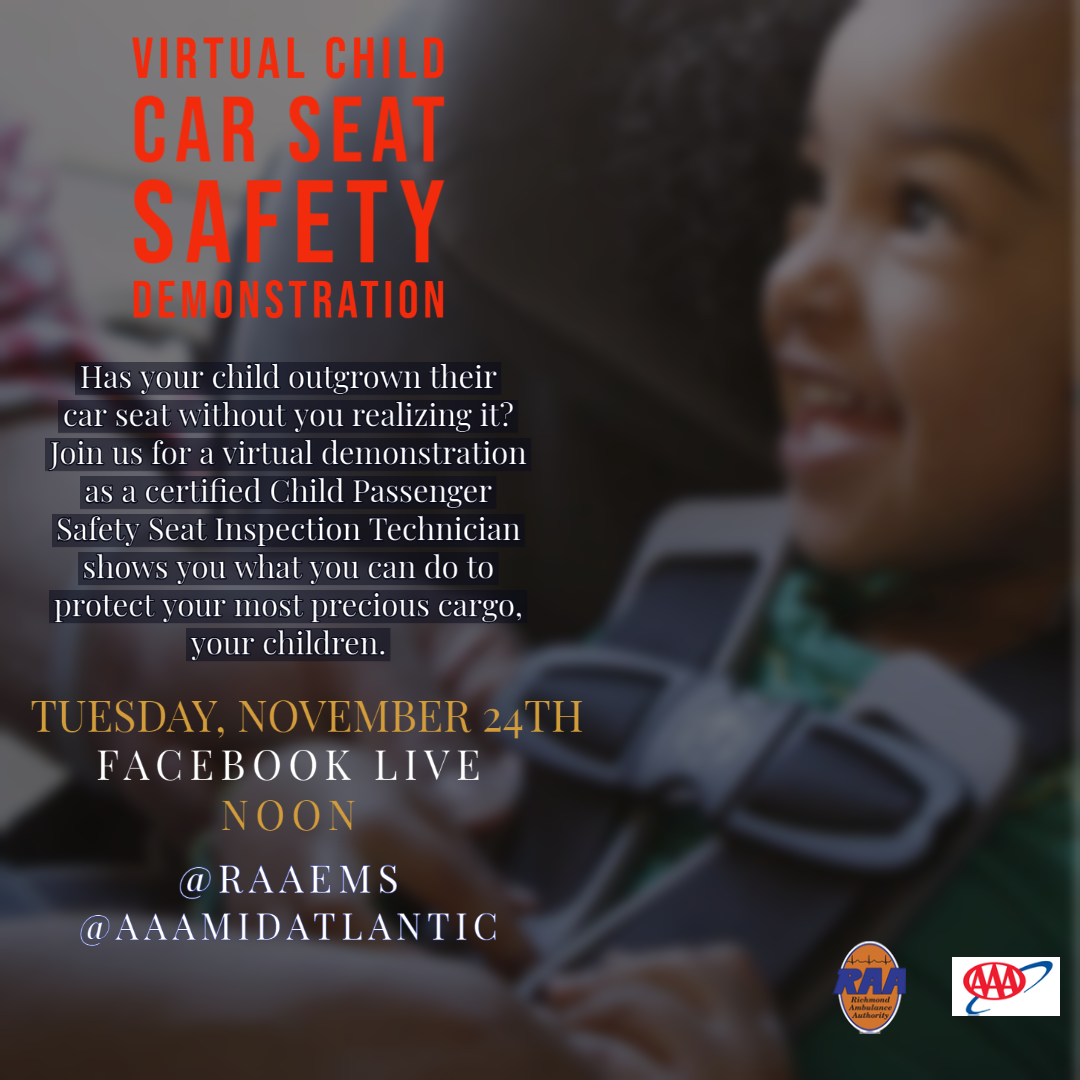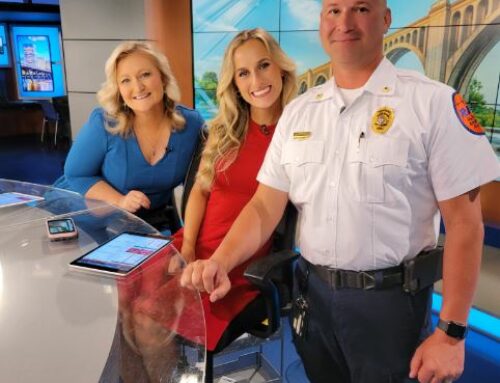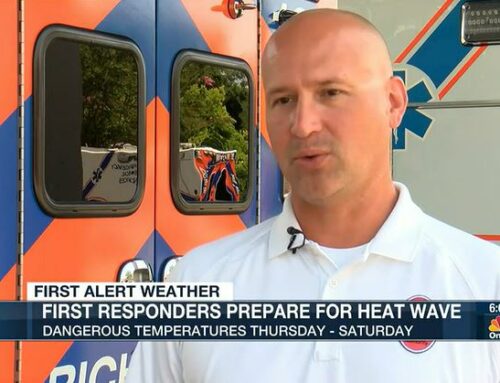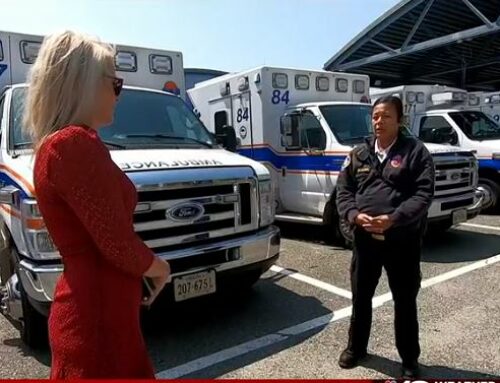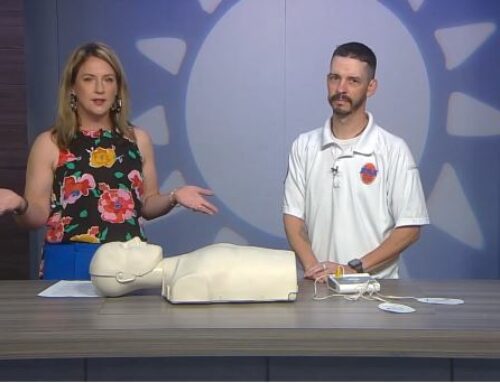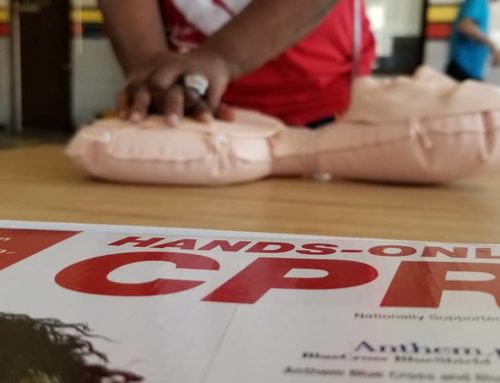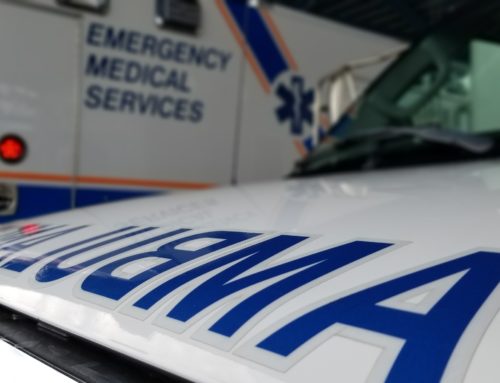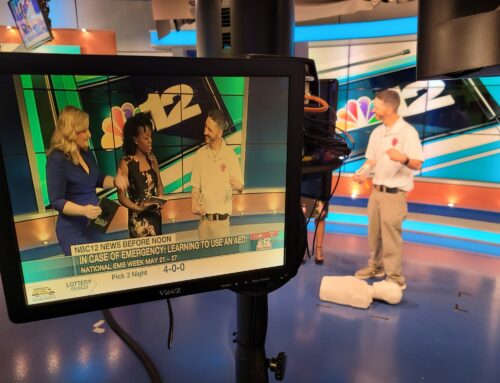Richmond Ambulance Authority and AAA Team Up For Virtual Child Car Seat Safety Demonstration on Facebook Live to Guide Parents On Securing their Most Precious Thanksgiving Cargo of All
On Tuesday, November 24th, the Richmond Ambulance Authority teamed up with AAA Mid-Atlantic for a virtual child car seat safety demonstration to help guide parents, grandparents and caregivers on what to look for when checking their child’s car seat. AAA and Richmond Ambulance Authority are urging you to check your child’s safety seat. The COVID-19 pandemic changed everything in 2020. Schools were closed, children’s activities were cancelled, cars sat idle and the entire family had to not only adjust to working and going to school from home, but has also been focused on how to stay safe. One important safety measure, however, could have been overlooked due to the sometimes chaotic days as the pandemic has continued now for close to eight months. In that time period, many children could have outgrown their current child safety seats without parents realizing it. Even before the pandemic hit, The National Highway Traffic Safety Administration (NHTSA) estimated 46% of car seats and booster seats were being misused in a way that could reduce their effectiveness. Is your child’s car seat still right for them?
“Car seats are made to grow with a child as their height and weight changes,” said Morgan Dean with AAA Mid-Atlantic “Because of all the disruptions this year, parents and guardians may not have been as focused on checking those seats.”
Children can outgrow child seats and booster seats quickly. As their bodies change, the fit of the seat changes too. Seats need to be turned from rear-facing to forward-facing, straps need to be raised and readjusted and headrests need to be extended as children grow. With drivers putting fewer miles on their cars and not transporting children as often as they would in a normal year, seat adjustment needs may have gone unnoticed. As some families plan to travel for the holidays, now is the time to check child safety seats and make adjustments before hitting the road.
“Nothing is more important than the safety of our children, and we cannot stress enough how important a correctly fitted car seat is, especially this year when you may not be inspecting your child’s seat as often,” said Becky Jamison, RAA’s lead Child Passenger Safety Seat Technician. “It is critical to your child’s safety to make sure their car seat is installed correctly before any trip, no matter how far you plan to go.“
With schools transitioning between virtual and in-person and parents juggling work responsibilities, grandparents, other relatives and family friends are being called on to help with childcare this year. They may have pulled an old car seat or booster seat out of storage that hasn’t been used in a few years. Car seats have expiration dates and should not be used past that date. The expiration date can be found on a sticker pasted somewhere on the seat. AAA and Richmond Ambulance Authority are reminding families to check the expiration date on car seats and replace them with new ones if they are out of date.
Colder weather is also setting in and parents need to be careful not to strap children into the seat wearing heavy coats. Readjusting straps to account for a coat can result in straps that are too loose to protect the child in a crash. Parents should remove the coat, strap the child into the seat, and then lay the heavy coat over them if it’s cold in the car. Layering thinner cold-weather clothing like fleece can help keep a child warm, but not create a safety hazard, in a car seat.
Common Car Seat Mistakes:
- Using restraints for older children too soon. Parents frequently advance their children into the stage of safety restraints too soon. The American Academy of Pediatrics (AAP) car seat recommendations advises parents to keep their children’s car seats in the rear-facing position for as long as possible. Infants should remain rear-facing until they reach the upper weight limit of their rear-facing car seat. All children under age 13 should be placed in the back seat.
- Installing safety seats too loosely. When a child safety seat is properly installed, it should not move more than one inch in any direction. Parents should use either the vehicle’s seat belt or LATCH system to secure the safety seat—but not both, unless approved by the vehicle and car seat manufacturers. If using a seat belt, make sure it is locked to hold the seat snugly in place.
- Adjusting seat harnesses incorrectly. Safety seat harnesses should always be snug and lie flat without twists. Harnesses should be at or below the child’s shoulders when rear-facing and at or above the shoulders when forward-facing in order to hold the child’s body upright and against the seat. The chest clip should be positioned at armpit level.
- Gadgetry: If it didn’t come with the seat (or wasn’t purchased from the manufacturer to use with the seat), it wasn’t crash-tested with the seat. It therefore cannot be guaranteed to be safe and should not be used. This includes strap covers, mirrors and toys.
- Not replacing seats after a crash or using one without knowing its history: Check your manual to see if the seat should be replaced even after a minor fender-bender and even if no child was in the seat at the time. Also, never buy a used car seat, and never accept a free used one unless you’re sure that it’s never been in a crash. Even if it looks OK, there may be damages that aren’t visible. It is safer to buy a cheap, new seat than a high-end used seat. All seats pass the same pass/fail crash tests. Remember to register your car seat or booster seat with the seat manufacturer so you can be notified in the event of a recall.
Residents in the City of Richmond can schedule a free inspection of their child’s car seat at RAA’s headquarters. One of the agency’s Child Passenger Safety Seat Technicians will inspect and instruct parents/guardians on how to properly install a child’s car safety seat. For more information visit https://raa.maxxpotential.org/outreach/#programs
For residents outside of Richmond, visit the Virginia Department of Health’s website at https://www.vdh.virginia.gov/child-passenger-safety/safety-seat-checks/ to locate a Safety Seat Check Station closest to you.
About the Richmond Ambulance Authority: In 1991, the Richmond City Council and the City Manager implemented an Emergency Medical Services (EMS) system that placed the patient first and guaranteed its performance to the City’s residents. Today, the Richmond Ambulance Authority responds to approximately 200 calls per day and transports, on average, 150 patients per day. RAA’s emergency response times are among the fastest in the nation with ambulances on the scene of life threatening emergencies in less than 8 minutes and 59 seconds in more than 90% of all responses. RAA is one of only 32 EMS agencies in the United States accredited by both the Commission on the Accreditation of Ambulance Services and the National Academies of Emergency Dispatch. RAA is a Commonwealth of Virginia Accredited Dispatch Center. RAA is also the 2016 Virginia EMS Agency of the Year.
About AAA Mid-Atlantic: AAA provides automotive, travel, and insurance services to 60 million members nationwide and more than one million members in Virginia. AAA advocates for the safety and mobility of its members and has been committed to outstanding road service for more than 100 years. AAA is a non-stock, non-profit corporation working on behalf of motorists, who can now map a route, find local gas prices, discover discounts, book a hotel, and track their roadside assistance service with the AAA Mobile app (AAA.com/mobile) for iPhone, iPad and Android. For more information, visit www.AAA.com.

